| Umělec magazine 1999/7 >> Belgrade’s Sobering Up (Interview with curator Branislav Dimitrijević) | List of all editions. | ||||||||||||
|
|||||||||||||
Belgrade’s Sobering Up (Interview with curator Branislav Dimitrijević)Umělec magazine 1999/701.07.1999 Vladimir Tupanjač | serbia | en cs |
|||||||||||||
|
Our interview takes place in a moment when history of this state or, better, the flow of time in the story of this state has come to a stop and shrank to a breaking point, a kind of unlocking, a possible opening of the black box of our times, which is, of course, an optimistic assumption. But I think that we’ll agree that the Spring of 1999 nevertheless terminated an exciting and at the same time nightmarish incubatory period of universal impotence and universal indifference. In what way does today’s art, especially the kind that doesn’t hesitate to get involved in the context of the current socio-political situation, manage to survive and are there any dilemmas regarding its survival or, perhaps, even purpose of art in general under the current circumstances?
I must say that an artistic practice that would speak up and openly declare its relation to the social context we live in hasn’t articulated its position clearly enough. There is a certain desire to apply an artistic approach in dealing with those kinds of problems but the awareness of how it could be achieved hasn’t reached a mature stage yet. The reason is simply the fact that there still is a dogmatic myth about art as a purely “subjective act“, art practiced by every artist for himself and within a context created by himself and, consequently, there is also a taboo proclaiming that facing reality is a kind of treason, a betrayal of the fundamental postulates of art as an act of subjective creativity. An artist who wants to address the problems we have been experiencing is faced with numerous questions. These questions are primarily political, and the political questions are systematically ignored here. Contrary to the stereotyped idea that there is a surplus of politics in this country and that artists are therefore compelled to see things largely in this light, it is evident that there is a deficit of political thinking, political tradition, political communication and, of course, political activism. And, above all, there is a consequent suppression of the political roots of the Yugoslav crisis, the ultimate deadliness of an ill-conceived, retrograde and extremely dangerous political model that could be labeled the “Serbian national program“. On the other hand, trying to introduce a simplified version of a utopian political role of art is nothing but a vain attempt at establishing some kind of naive paradigm according to which art could be functionally applied to a situation which, in relation to the liberal tendencies dominant in developed countries, could best be described as a malignant tumor. Amidst all that, the artists find themselves in a situation where, having grasped the complexity of the problem, they mainly give it a wide berth, showing no inclination to address the social context. I would say that, above all, they didn’t want to deal with ideology because of the numerous voices that have been trying to convince us that the time we live in is the time of “the end of ideology“, that ideology is one of the models made obsolete with the collapse of the Eastern Bloc’s “real Communism“. In the cynical society we live in, both in the West and here, ideology is far from being irrelevant notion. The apparatus holding power in such a society is no longer trying to conceal the mechanisms it utilizes, these mechanisms become open, transparent, so that there apparently isn’t any ideological predilection. People accept this transparency of the mechanisms of government with some kind of indifference, as if it were something they are unable to influence. Whereas earlier the system oppressed people who knew nothing about it and its functioning, today that systemic status quo relies on people who are well aware sciously uphold and preserve that order and that system. This is the foundation of contemporary ideologies, including the one in these parts of the world. For an artist, it is possible to get out of the confusion in several ways, the most common being resisting the system and its ideology through cynicism in its various guises: ridiculing is seen as a way to disclose the system’s functioning. This system, however, has already been disclosed and it has never relied on mystification much anyway. Nevertheless, this particular mode works successfully as an artistic expression if it strives to infect the system by taking over some of its aspects and bringing them into a state of inverse proportionality. In different media it could be realized differently (from actions to objects: a similar kind of cynical attitude to the social structure is evident both in the sculptures of Zdravko Joksimović and the actions of the group ŠKART). A very special place in this context certainly belongs to the work of Raša Todosijević, penetrating deep into the roots of the local nationalist trauma and into the roots of totalitarian ideologies in general. There are other strategies too: direct treatment of the psychological trauma brought about by suppressing of violence all around us (Milica Tomić’s video xy ungelost), deconstruction of the complex role of media (Zoran Naskovski’s web work about TV Belgrade), the projects of the association “Apsolutno“, etc. If we reconcile ourselves with the fact that war is no longer just a metaphor and face the materialization of all our complexes, there is certainly an unavoidable and pressing question: how should we change, what will be the new choice from the arsenal of artistic weapons for dealing with these times and the pressures they bring with them? Will the war as a final act, an end or a closure, allow us to absorb and interpret it, to make any sense out of it? We’ll se about that. We will be able to make some sense out of war if we don’t look at it as a kind of natural catastrophe, the way people here are often inclined to see it, reverting to fatalistic commonplaces. The system here makes good use of this fatalism. It is contagious and at the same time corresponds very well with our cultural tradition, I mean, primarily, the Orthodox, East Christian tradition, here as well as, for instance, in Russia. It was this tradition that in fact made those who are victims of the regime and its terror, or any other kind of oppression, unaware of the fact that they could influence the course of events, the way in which society develops in any conceivable way. In the end they started to nourish and venerate their allotted role of victims. We were all told, and here it had and still has a very clear use, that the ruling system was something beyond our control and that we were unable to influence it in any way. It caused various frustrations for we all took part in some protests against the regime which were realized in different ways as rallies or other actions and which turned out to be ineffective. Every failure was a new articulation of that fatalistic theory, a new contribution to the belief that we were unable to do anything about it. And, according to this logic, the war was also interpreted as some kind of natural catastrophe, an earthquake or flood, and not a conflict that resulted from a very clear chain of political events. Ever since the end of the eighties, it was very plain where we were headed and how it was going to end. This materialization of the catastrophe might finally cause some kind of reversal in thinking in which people who haven’t been aware of the local historical circumstances so far, would now that it’s finally happened realize how and why it all has come to pass. It is a fact that this war will surely mean a lot in terms of the general sobering up, both here and worldwide. Naturally, I hope that here this sobering up will take the form of realization that the unlimited power of a group of people, authorized at the very beginning by majority of the population, leads straight into a catastrophe. Only from the point of view of a Serb nationalist could this situation be seen as a breaking point when it is suddenly understood that instead of what ought to have happened as envisaged in the fantasies of the Serbian nationalism, something diametrically opposite actually took place. The other lesson, the one aimed at the world community, is in fact a lesson about how the world functions, because it still does function in exactly the same way as in the nineteenth century. There are still great powers deciding how to divvy up territory while there is no trace of those new principles eloquently advocated by liberal capitalist countries. These are not only lessons about future, but lessons in history as well. Should we expect any significant turn in the currents of local artistic practice in the post-war period? The history of art in the twentieth century shows that every war exerts great influence on the artistic situation, above all at the starting point of every work of art, in the domain of ideas and motivation of the individual artist as somebody who is faced with the question of physical survival? Predictions aren’t my job, I’m only an art historian. I definitely agree that this war will affect everything, including art. For instance, contemporary art has recently been preoccupied with the questions of body, questions that have risen as a result of observing the situation in the more developed societies where there is a traumatic gap between sophisticated conformity, society based on the security enjoyed by major part of the population, and cracks in the reference system caused by globalization (media images of wars, famine and natural catastrophes) as well as cracks in the very makeup of those security societies, such as especially traumatic phenomenon of AIDS for the artistic community of the eighties. Serbian society is completely different. Unlike more developed countries, where the entire public sphere often becomes very agitated over rather insignificant issues (and where, for example, governments may fall as a result of any publicly proven abuse), the public sphere [in Yugoslavia] doesn’t react even to extremely grave abuses of power, public trust and ideas, let alone the fact that any public debate over a proposed parliamentary bill is unthinkable. Art is, of course, incapable of influencing public opinion to any great extent but, through non-verbal expression peculiar to it, it can certainly provide us with a more thorough understanding of the underlying social relations and initiate new and radical turnabouts and developments. Under the entry “War“ in his project for a lexicon of the twentieth century, J. G. Ballard, the acclaimed SF author, wrote: “At last there is a possibility to defeat war on the linguistic plane - if war is an extreme metaphor, we can defeat it by inventing still more extreme metaphors“. Just to what extent this war - if we can call it a “war“, that is, if we disregard Baudrillard’s thesis about the non-existence of wars in times of an information totalitarianism - was really a surprise, a kind of big event, and just how much that energy and the atmosphere of combat pathos and bogus heroics influenced the balance of power in the society, an area where modern art finds its outlet as an active social agent? Baudrillard’s theses are seductive, but I must admit that I regard him as one of the New Age gurus, a type I have no great affection for. As far as the situation in Kosovo is concerned, everything is pretty clear. It took a long time for the developed world to realize that the situation in Yugoslavia wasn’t a regional but a global problem, so that all the implemented solutions were unfortunate and belated. The air-strikes came about as a result of a setup that resembled a game of poker when one of the players after protracted bidding must finally show his cards. Since the developed countries, in their desperation and impotence, took to threatening Serbia with the use of force, in the end it turned out that they were forced to carry out those threats, because it was the only way to show they hadn’t been bluffing (which, I suppose, Milošević believed almost to the last moment). In the beginning it was all rather timid and reticent for a war situation but soon, as the martial frenzy gained in intensity, many barriers fell: on the one hand we had persecution and atrocities committed on the Albanian population in Kosovo and on the other hand “collateral“ killing of the Serb civilians. The war was no surprise, it was just the logical consequence of historical circumstances. As to the situation in Serbia, just take a look at how quickly the national pathos, omnipresent during the air strikes, disappeared, leaving just impotence and apathy. I suppose that this society is now faced with three options: terror, implosion or paralysis. Probably all three at once. CZSU (The Center for Contemporary Art) was founded in 1994, and since 1995 its main public activity was organizing large exhibitions. The first annual exhibition, in October 1995, dealt, in less critical and somewhat more theoretical ways, with relations between art and its context. The second annual exhibition, “Murder”, in 1997, showed a much clearer intention to cope with our everyday lives, individual problems, fears and dilemmas. Are we to expect the next large exhibition, which would be a continuation of the practice in the previous years, and what could be its starting point, focus of interest, leitmotif? Of all the Center’s activities (exhibitions, documentation, library, grants, international contacts, servicing the various needs of the artists), the organizing of exhibitions in Serbia turned out to be the most challenging task. The fact that it is impossible to cooperate with the state-financed institutions (primarily with the Museum of Contemporary Art), the forcible closings of the independent institutions that were our partners (e. g. Cinema Rex) as well as the numerous organizational problems with some other alternative venues that (although they might be ideal spaces for that kind of projects, a good example is CZDK - The Center for Cultural Decontamination) simply don’t show sufficient interest in contemporary visual arts - these are some reasons why at this point we can’t talk about prospective exhibitions on the level of ideas and conceptions, but exclusively on the level of basic realization. And that’s exactly why right now it is very difficult to say anything about our plans regarding future exhibitions. Belgrade needs a large international exhibition like the one we have planned but it isn’t feasible at the moment. Thus our last project was, logically, a Web-project. The project, titled Reality Check, can be found at the address realitycheck.c3.hu, and it was carried out in cooperation with the Budapest Center for Contemporary Art, better known as C3. A part of your experience is closely connected to your stay and post-graduate studies in England in the years of affirmation of New British Art, when a specific atmosphere was created there, with the phenomenon of stars, typical for the Pop scene, very much present both among the artists (e.g. Damien Hirst) and among the critics and art-dealers (e. g. Jay Jopling). How have you utilized the experience and insights from that time since 1994, when you came back to a country still under UN sanctions, throughout the ensuing period of a very fragile and superficial stabilization and until the present day? Is there a possible comparison between the atmosphere peculiar to our art scene during the nineties, including its quality, in relative terms, and parallel global developments? I was fortunate to witness, during my stay in England, what was arguably the most thriving period of the British art scene since the end of the sixties. When I say “the most thriving period“, I’m not implying that there were any epoch-making achievements, but referring more to the systematic development of a social climate favorable to the visual arts. The quality of education was increasing steadily, the net of profit-oriented and non-profit galleries was growing in size and diversity, suddenly there was a great deal of media interest in art (from the specialized art publications, through daily papers, to fashion magazines), everything was smoothly fused into a unique and all-encompassing style, so that it really looked like a well-planned strategy. Even the political developments, the rise of the Labour Party to power in 1995, coincided with that enthusiasm and they certainly knew how to use it (regardless of what was in question, Pop music, visual arts, or film) and squeeze everything they could out of it, coming up with the nowadays very unpopular concept of “Cool Britannia“. As soon as the practice of Damien Hirst and other artists became part of the official cultural policies, the whole phenomenon acquired questionable, institutionalized overtones but, of course, new artists, with much more critical views of the entire experience, quickly appeared on the scene. It’s just natural social and cultural dynamics: at the moment when one practice becomes institutionalized it loses its aura on one level but gains another kind of prestige on another level, and thereby makes space for different practices that very soon fill the gap. Whereas in our country some artists simply become part of the official cultural policies without any previous experience on the margins: they are launched there directly with the help of their friends who are in charge of Kulturpolitik and the other artists stay on the margins all their lives. The only acknowledgement of their work may be international recognition, which is of course a very complex and slow process. For example, take a look at the artists associated with the so-called New Artistic Practices in the seventies. The artists who went abroad (Marina Abramović, Braco Dimitrijević) acquired international status, and those who decided to stay here are still on the same margins as in their beginnings. That means that it is impossible to make any comparisons in the sense of your question but the example of British art at the beginning of the nineties is certainly instructive as a model of a clearly formulated artistic strategy. However, anything of the kind is impossible here without an unambiguous change of the political and cultural system and a clear professionalization of all pertinent relations. On one occasion you quoted Hirst who said: “Sometimes I feel that I have nothing to say - and I often want to communicate that“. Could that precept of the nineties be applied to the atmosphere in the Belgrade and Yugoslav scenes during the same period and under which conditions? It could but it was uttered having in mind a completely different context within which it sums up a certain deflection from a kind of political illustrativeness that British art was often too inclined to embrace. Looking at this quote in the context of Pop culture, I associate it with the famous line of the Beatles: “Half of what I say is meaningless, but I say it just to reach you, Julia“. So, it is about art as a form of seduction but also as a form of positioning in regard to the crucial problems of social communication or, alternatively, as the experimental and ultimate point of that communication. I’m a little afraid that in local conditions such a sentence would be only a confirmation of the status quo: I do what is required of me, I have nothing to say and I can only communicate that impasse to others. Looking at it that way, it has already been applied both in the social and the artistic context. To what extent is the Yugoslav artist ready to (or interested in) exploring, analyzing and later effectively utilizing the socio-political background? Is there a problem of distancing from the society he or she is part of and is that distancing or watching from the outside, from a neutral angle, indispensable? The development of radical political attitudes is often propitious for art and if you take a look at the avant-garde tradition, you will see that most of the artists favored different political options of the left: there were anarchists, Trotskites, disciplined members of various Communist parties, suffragettes, and even Stalinists. Certainly, there were also artists who were conservatives and fascists, and this is especially true of Serbia in recent years, although I must say that the majority of artists have mainstream-centrist or traditional-nationalist political convictions. Such ideologies are by no means a fertile ground for the ideas of interaction of art and its socio-political background. In a recently published text, Victor Misiano develops an interesting argument about the non-existence of art engagement‚ in post-communist Russia as a result of the non-existence of any kind of critical discourse, except for the dissident one, which has monopolized political thought and political speech on the cultural scene. Dissidence isn‘t a political category, because it covers the whole spectrum of political orientations, and the only common denominator is the regime it is opposed to. So that power as such remains the modus vivendi of a dissident and he can’t or doesn’t want to step forward with a clearly profiled political program, because he’s afraid of being excluded from the club of dissidents. And exactly that is the source of success of the ultra-right political option in Serbia, whose political strategy is expressed with an almost pornographic clarity. What are the prospects of our art scene as far as the support by domestic and foreign foundations, sponsors, governmental and non-government organizations is concerned, especially in the light of the post-war optimism or pessimism? As far as I know, the Open Society Fund is the only foundation that, through the activities of CZSU and some other alternative institutions, has been supporting the local scene. As long as the Open Society Fund is the one and only foundation, everything will be as it is. As you know, there is no possibility to attract any new sponsors without a change in the political system. Can we expect any changes in the market dimension of our art scene since it should be the natural stimulus in functioning of the art system? I think that recently there was an exhibition with the explicit objective of exploring possibilities for establishing a market network around the contemporary artistic production in this country, and that it has proven to be a rather challenging task. Yes, it was the exhibition “Excess“, organized by curator Jasmina Čubrilo in the Belgrade Art Trade Gallery. The exhibition itself was an interesting small-scale setup, but the problem becomes obvious when we come to the inevitable question: has any one of the works actually been sold? As far as I know, it hasn’t, so the whole concept remains only a resigned statement about the condition of the art market. To make things clearer, I must say that there is no art market here, because any market implies a relation of supply and demand. The urban middle classes, as potential buyers, are utterly impoverished, and for the kind of clientele that still can afford to buy a work of art, there is a monopoly of a clique of mediocre artists that under the protection of the regime has taken over the positions both at the School of Art and in all of the museums and recently I’ve heard that they even want to open some kind of private Art Academy. Of course, the choice of ten mediocre artists is more than enough for the level of demand and the average level of education of the buyers: a little bit of Serbian myth, a little bit of naked women on horseback, a little bit of river scenes with fishermen and folktale motives, here the paint right out of the tube, there a copied photograph - what more can you wish for? Cuspit said in the eighties, repeating a daring claim of Oscar Wilde: “The Critic is the Artist“. He wanted to emphasize the role of criticism as the conscience of art. What is, in that sense, the range or the area of activity of a critic in the nineties, especially in a milieu so highly charged with political tensions where the job is bound to be both warfare and missionary work, struggling for preservation, for continuity, for sense? A critic today isn’t somebody who can watch and interpret finished works of art from a safe distance. He must communicate both with the artists and with the milieu to which he presents the works. The reason is simple: the process of creating a work of art is no longer the exclusive domain of its author - it belongs to the language, to the discursive formation that somehow manages to possess the author, to filtrate, radicalize, dislocate him, make him paradoxical and ambivalent. The critic must be possessed by the language as well, in order to be able to rationalize it, give it a direction and maybe to reach a point where, doing that job, he isn’t ashamed to try being, as Wilde said, the conscience of art. The important thing for me is to be able to localize the position of a work of art with regard to its context and even, to a certain extent, to ignore the intentional component of the work if it is capable to go on living beyond the specific objective or outlook of its author. The meaning is a question of negotiation, argumentation, politics, and not of an individual decision. But art is definitely a question of decision as Raša Teodosijević affirmed in a performance from the seventies. Belgrade, June/August 1999
01.07.1999
Recommended articles
|
|||||||||||||
|
04.02.2020 10:17
Letošní 50. ročník Art Basel přilákal celkem 93 000 návštěvníků a sběratelů z 80 zemí světa. 290 prémiových galerií představilo umělecká díla od počátku 20. století až po současnost. Hlavní sektor přehlídky, tradičně v prvním patře výstavního prostoru, představil 232 předních galerií z celého světa nabízející umění nejvyšší kvality. Veletrh ukázal vzestupný trend prodeje prostřednictvím galerií jak soukromým sbírkám, tak i institucím. Kromě hlavního veletrhu stály za návštěvu i ty přidružené: Volta, Liste a Photo Basel, k tomu doprovodné programy a výstavy v místních institucích, které kvalitou daleko přesahují hranice města tj. Kunsthalle Basel, Kunstmuseum, Tinguely muzeum nebo Fondation Beyeler.
|







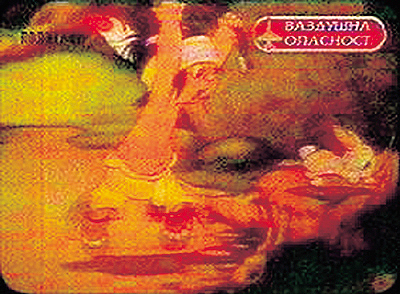
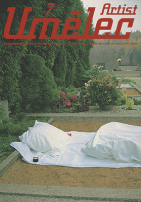


















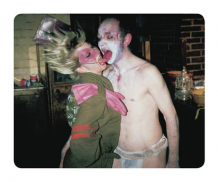




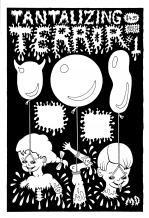
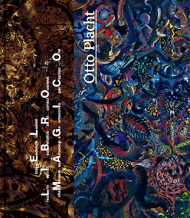
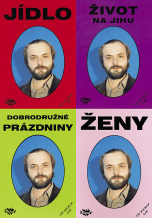
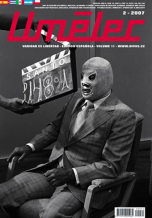


 New book by I.M.Jirous in English at our online bookshop.
New book by I.M.Jirous in English at our online bookshop.
Comments
There are currently no comments.Add new comment